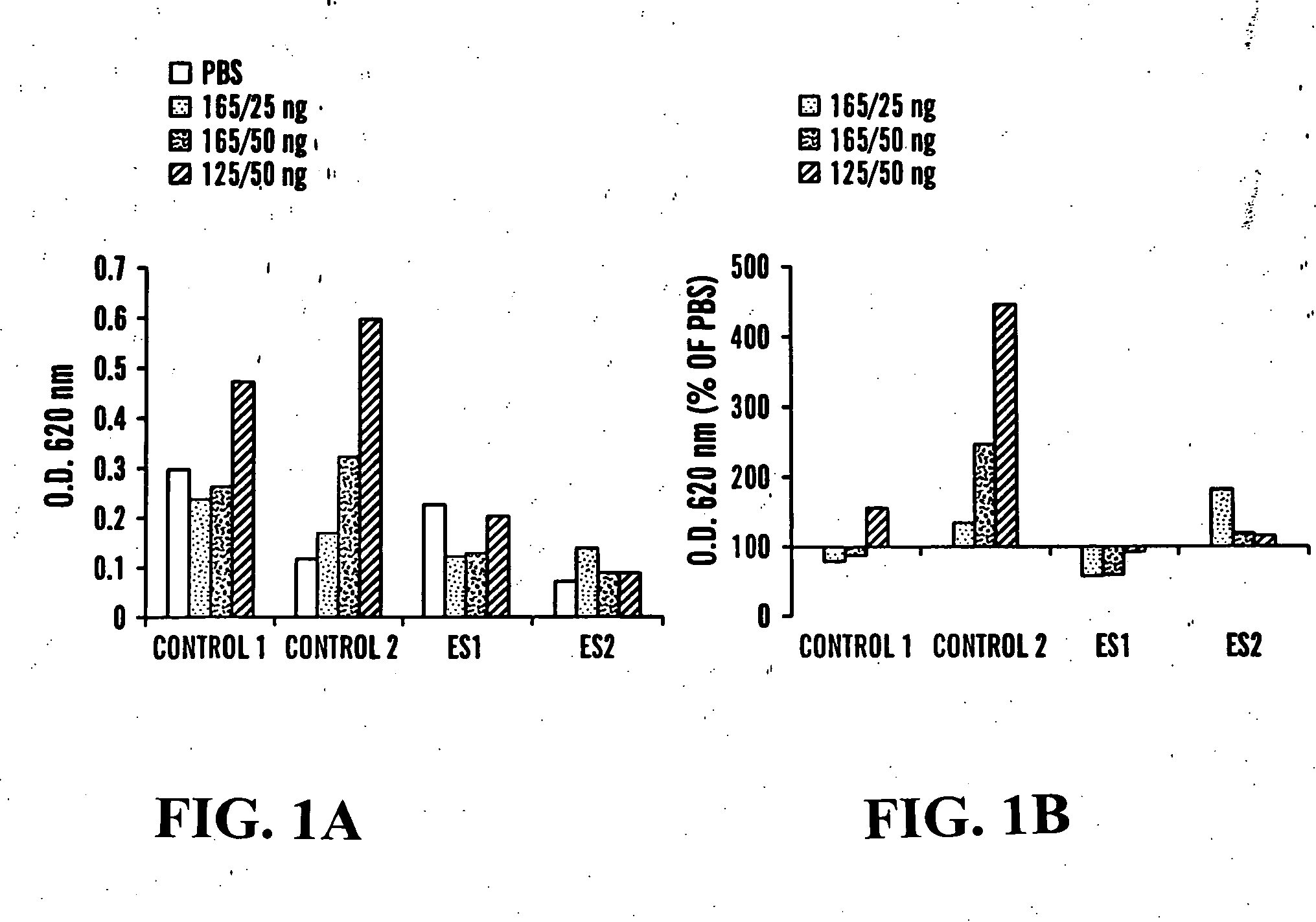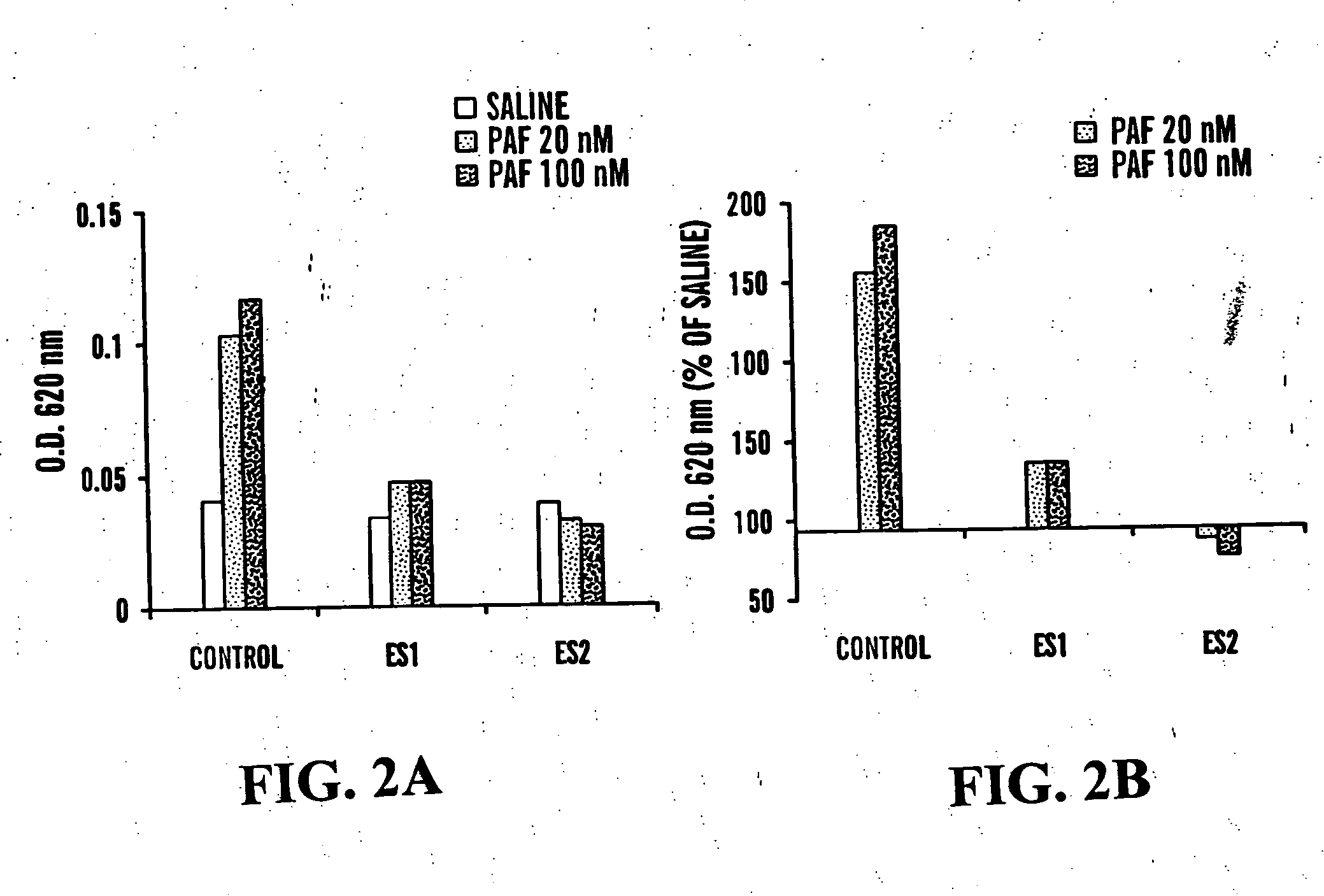Methods for inhibiting vascular permeability
a vascular permeability and vascular technology, applied in the direction of angiogenin, drug compositions, metabolism disorders, etc., can solve the problems of decreased vision or blindness, decreased vision or permanent vision, and increased risk of neovascularization, so as to prevent the leakage of blood vessels
- Summary
- Abstract
- Description
- Claims
- Application Information
AI Technical Summary
Benefits of technology
Problems solved by technology
Method used
Image
Examples
example 1
Effect of Endostatin on Vascular Permeability and Hyperpermeability:
[0087] The antiangiogenic factor (endostatin) was injected intraperitoneally to FVB / NJ mice for 4 days. Immediately after the last injection, mice were anasthesized and received intravenous injection of 100 μl Evans Blue dye (1% in PBS). Subsequently, different amounts of VEGF165, VEGF121 or saline were injected intradermaly. After 20 minutes, mice were sacrificed and skin flap from the back was removed and photographed. Skin samples from the injection sites were excised and incubated in formamide for 5 days in order to extract the dye and O.D. was measured at 620 nm. Macroscopic examination of skin flaps from control mice showed massive extravasation of Evans Blue dye at the VEGF injection sites. VEGF12, had a stronger hyperpermeability activity that VEGF165 and there was not much difference between 25 and 50 ng / ml VEGF165. Mice treated with the antiangiogenic factor had an overall lower dye leakage than the cont...
example 2
HPMA copolymer-TNP-470 Inhibts the Proliferation of BCE Cells and Chick Aortic Rings In Vitro
Synthesis of HPMA Copolymer-TNP-470 Conjugate:
[0096] TNP-470 was conjugated to HPMA copolymer-Gly-Phe-Leu-Gly-ethylendiamine via nucleophilic attack on the α-carbonyl on the TNP-470 releasing the chlorine. Briefly, HPMA copolymer-Gly-Phe-Leu-Gly-ethylendiamine (100 mg) was dissolved in DMF (1.0 ml). Then, TNP-470 (100 mg) was dissolved in 1.0 ml DMF and added to the solution. The mixture was stirred in the dark at 4° C. for 12 h. DMF was evaporated and the product, HPMA copolymer-TNP-470 conjugate was redissolved in water, dialyzed (10 kDa MWCO) against water to exclude free TNP-470 and other low molecular weight contaminants, lyophilized and stored at −20° C. Reverse phase HPLC analysis using a C18 column, was used to characterize the conjugate.
BCE Proliferation Assay:
[0097] Bovine adrenal capillary endothelial cells were seeded on gelatinized plates (15,000 / well). Following 24 h incu...
PUM
| Property | Measurement | Unit |
|---|---|---|
| concentration | aaaaa | aaaaa |
| concentration | aaaaa | aaaaa |
| molecular weight | aaaaa | aaaaa |
Abstract
Description
Claims
Application Information
 Login to View More
Login to View More - R&D
- Intellectual Property
- Life Sciences
- Materials
- Tech Scout
- Unparalleled Data Quality
- Higher Quality Content
- 60% Fewer Hallucinations
Browse by: Latest US Patents, China's latest patents, Technical Efficacy Thesaurus, Application Domain, Technology Topic, Popular Technical Reports.
© 2025 PatSnap. All rights reserved.Legal|Privacy policy|Modern Slavery Act Transparency Statement|Sitemap|About US| Contact US: help@patsnap.com



